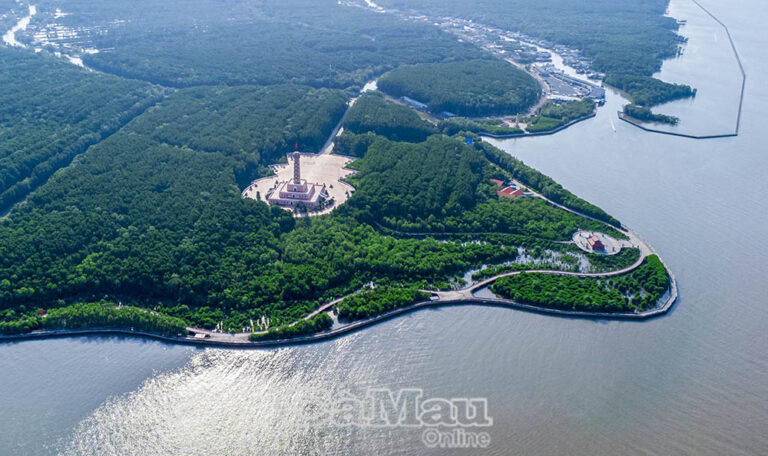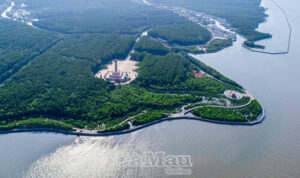Through the automatic immigration gate system (Autogate), it will only take passengers about 5 minutes to complete the procedure, shortening the time compared to manual checking.
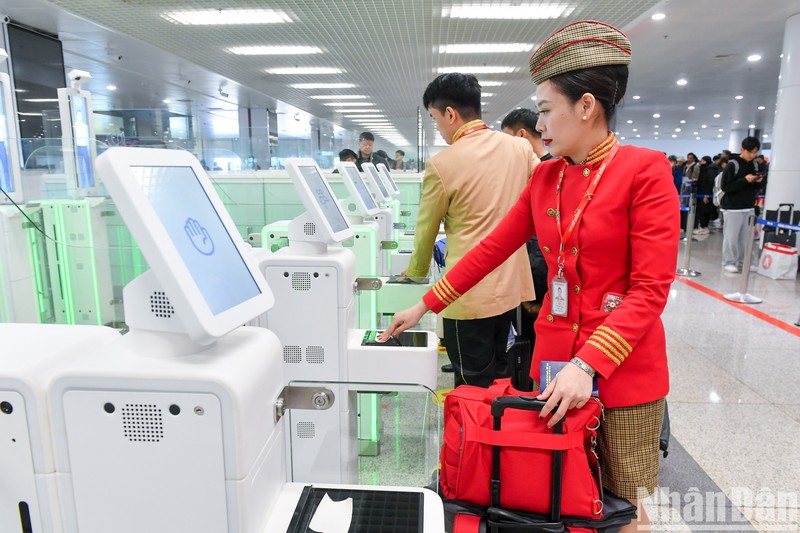
From August 2023, the automatic immigration gate system (Autogate) was officially deployed by the Immigration Department under the Ministry of Public Security at five airport border gates: Noi Bai, Da Nang, Cam Ranh, Tan Son Nhat and Phu Quoc. This is the first technology deployed on a large scale at air border gates throughout the country.
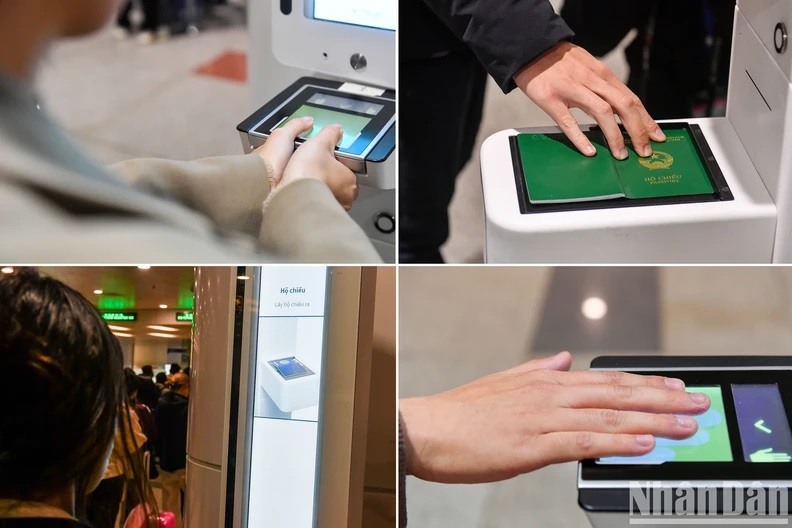
Autogate gates apply to all Vietnamese citizens with passports featuring entry chips. Those who use a passport without an electronic chip must complete the registration procedure to use Autogate before using the automatic immigration gate. Travellers only need to register for a permit once for all subsequent entry and exit occasions, as long as the passport remains valid. The process takes around four minutes and involves passport and fingerprint scanning, biometrics and facial recognition.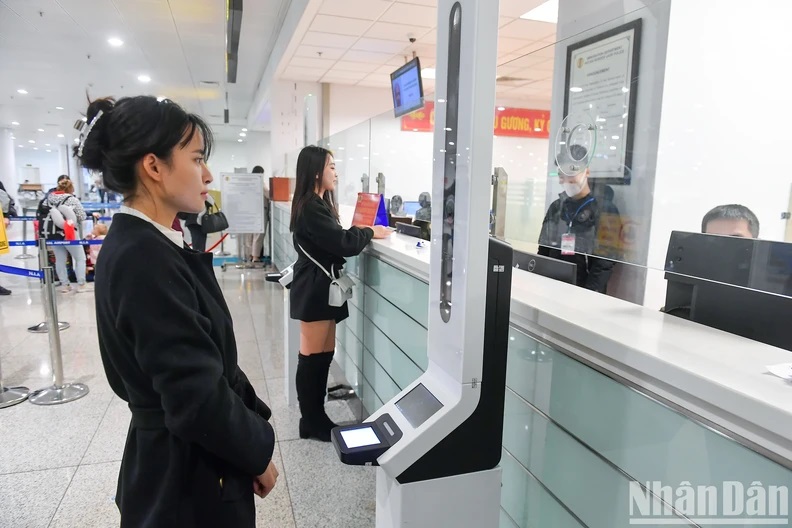
Passengers check in at the manual column.

For departures, the system is only available for Vietnamese citizens holding diplomatic and official passports and those possessing APEC business travel cards and cabin crew members. The Autogate has not yet been applied to foreign passengers upon their arrival, only their departure if they have a valid residence or temporary residence card issued by authorised agencies of Vietnam.
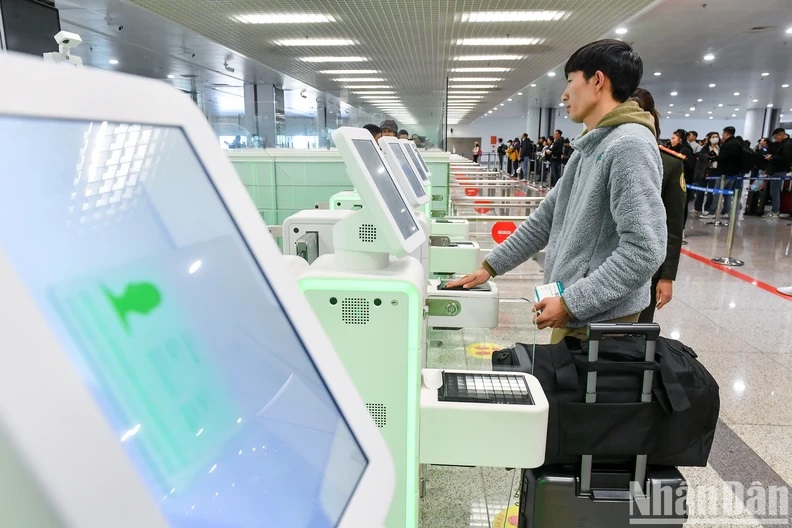
The Autogate area comprises two layers. In the first layer, passengers scan their passports and boarding passes. After they successfully scan, face recognition and fingerprint scanning will follow, eliminating the need for customs officers to stamp the passport.

When clearing immigration with the Autogates, passengers will no longer have their passports stamped by customs officials.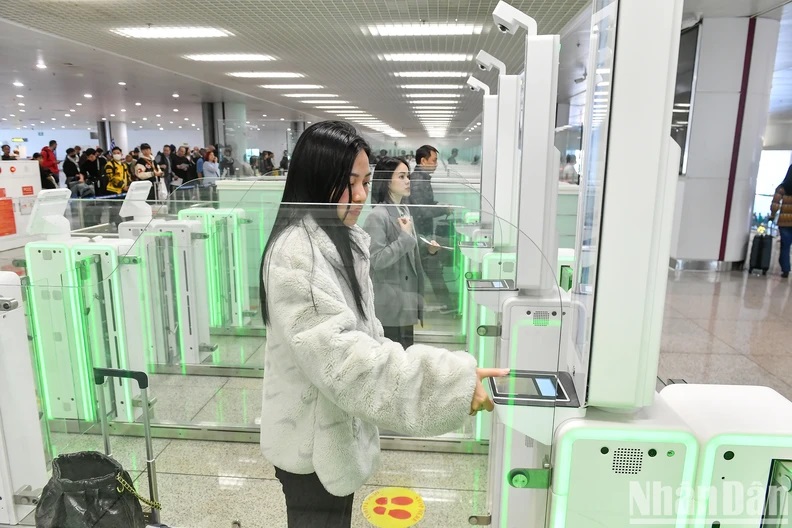
The Autogate system helps to strengthen security and prevent counterfeiting of immigration documents, contributing to enhancing Vietnam's position in the process of international integration, especially in the field of import and export management.

Bui Thi My Hao was happy when it took less than 5 minutes to complete entry procedures into Vietnam after the flight from Hungary to Noi Bai. She said that compared to before, the time has been drastically shortened. Female passengers also hope that the Autogate system will continue to be expanded to create convenience for passengers.
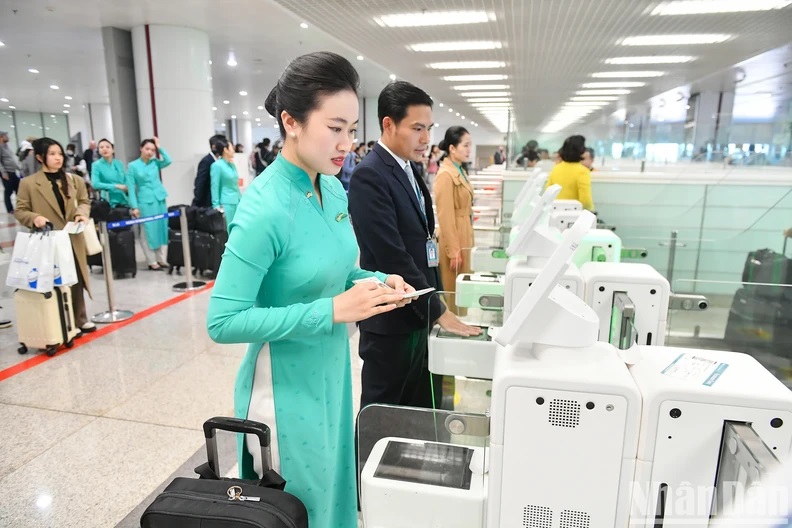
Flight crew members of Vietnam Airlines carry out immigration procedures through Autogate.

Currently, Noi Bai Airport has 10 Autogate systems.
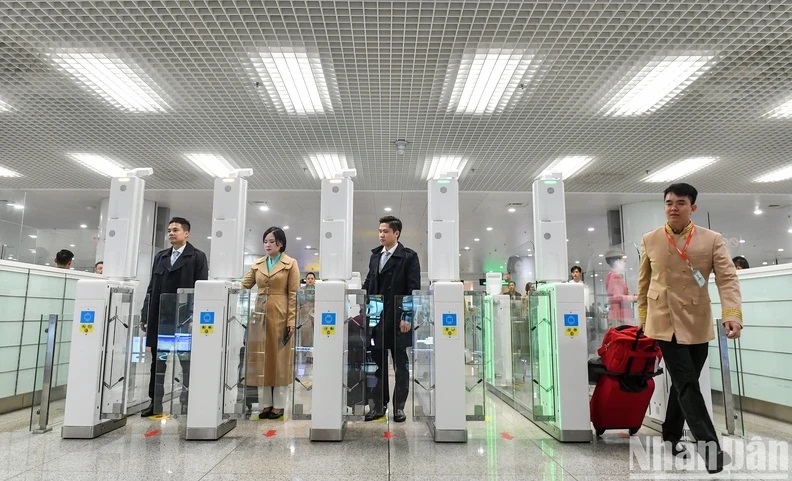
In addition to Noi Bai, the Autogate has been applied to four other airports from the beginning of August, including Tan Son Nhat, Da Nang, Cam Ranh and Phu Quoc. The implementation of this system is carried out according to the policy of the Ministry of Public Security in reforming administrative procedures and immigration. This is the first technology deployed on a large scale at domestic airports.

The screening camera at the automatic immigration gate system.

As of December 23, there were 194,879 entries and 669,985 exits through Autogate. The application of information technology is considered an important foundation and breakthrough solution towards improving the quality of administrative procedures, contributing to digital transformation in the Government's administrative reform.
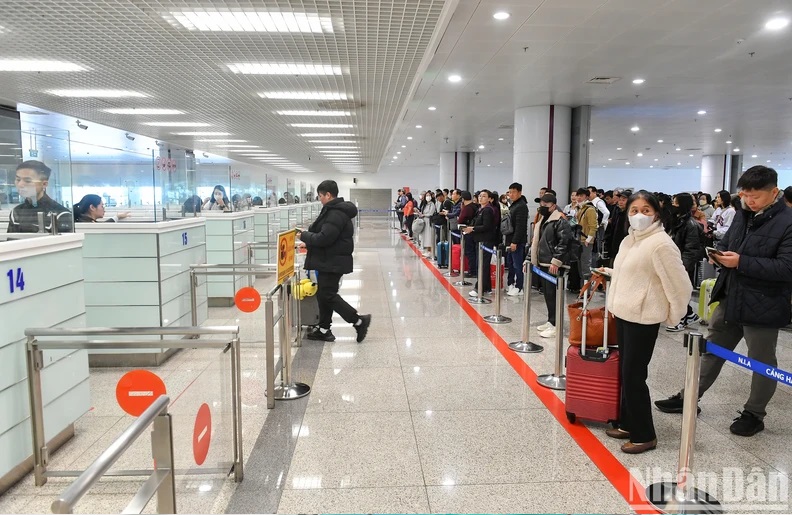
Guests wait in line to complete immigration procedures in the usual way.


